Spring Reverb IR Collection, Part Two
Six hardware springs IR collection.
Product Description
NOTE- This product is a collection of standard IRs- reverb impulses that will work with any convolution plug-in that allows you to load your own impulses. Most of my other products on this site are for use with Nebula, so if you don’t own Nebula be sure to stick to the Impulse Response Reverb category.
Spring Reverbs, Part TWO
Six different hardware spring reverb units were sampled very extensively to create this set of IRs. I’ve censored a couple of their names, but here’s some info
-
DXXXXXXr RV-1 -Considered by some to be the best rackmount spring reverb unit ever made. Sampled in stereo, and also in two different ‘monomix’ modes, which used a control on the unit to the output of both springs together into one mono reverb. The ‘MonoMix2’ version used the phase inverter switch with one of the springs, so the end result is a bit different. All three versions were sampled both with the HP filter on and off. 18 IRs altogether.
-
Fisher SpaceXpander -Said to have been used by legendary dub producer King Tubby. The unit itself is just a tube amp for driving a spring tank. Originally marketed for home and even car audio use! 3 dynamic steps are available for the main IRs, and there are 4 ‘bionic’ versions, which were created using a sampling technique I developed myself, which involves playing/recording the sampling tones through the hardware at faster or slower speeds, resulting in the frequency response of the reverb being shifted up or down as well as affecting the decay time, while maintaining the character of the original reverb. A total of 11 IRs.
-
Gibbs Spring -I sampled a Gibbs brand spring tank from the 1970’s, probably a NOS replacement part for a Hammond organ, using multiple techniques to get different sounding reverb effects. I did things like wedging objects into the springs, laying objects on the springs, loosely tying the springs together with wire, and using other hardware to create feedback loops. This produced 14 different sounding versions of the spring, for a total of 28 IRs.
-
JVC Nivico -A very cool, ‘vintage’ tube-driven spring reverb unit, intended for home audio use, with a great sound full of character. 5 alternate ‘bionic’ versions were made using the same method described above (for the SpaceXpander). Including dynamic steps there are 13 IRs for this one.
-
RXXXXd SRE-555 -A great piece of hardware that includes a tape delay/chorus as well as a spring reverb and a EQ. Here the spring was sampled, using 5 different settings on the EQ. These settings transition from a ‘trebly’ kind of upward tilt EQ, through flat (no EQ), down to a bassy downward tilt EQ that gives a huge sound. Because this spring unit only provides a mono reverb, I had the idea to ‘re-sample’ the IRs through my old Orban pseudo stereo unit. It applies comb filters to each channel, with inverted combs, to produce a stereo output from a mono input. I produced 5 alternate versions using different settings on the Orban unit, giving different stereo effects. Including dynamic steps for everything, there are 32 IRs of this SRE-555. The filenames for these IRs are labeled ‘1’ because in my Spring Reverbs Part One set, there’s another of this same model sampled, but it was a different actual unit. That one is labeled 2 because I sampled this one first. They do both sound different, even when none of the EQ was used.
-
Sansui RA-500 -Sampled from a pretty decent spring unit marketed for home audio use, with a stereo effect (separate springs for each channel). I sampled 6 ‘bionic’ versions of this one, and they came out very interesting and unique. With some you can hear the bouncy nature of the spring but it’s happening in slow motion and ends up sounding like underwater bubbles. Including dynamic steps there are 25 IRs of this unit.
Be sure to check out the audio demos to hear these impulses in action!
Edited, Organized
These impulses were all sampled at 32 or 24 bit, and have been meticulously edited for consistency. Expect a higher quality presentation than you would find in random free impulses you can find online. The filenames are thought out and give you information about what each IR is, and also give the set some nice organization.
Dynamic Steps
Different levels of input drive were used during sampling, producing up to four ‘dynamic steps’ available for almost every sampled spring reverb setup in this set. The difference in sound between these options is usually subtle, but after you find which spring setup you want to use, you should also try all of its dynamic options out just to see if you prefer one over the others. The lowest drive option may have some noise towards the end of the reverb tail in some cases, but it’s usually very subtle and probably won’t be an issue (you may even actually like it).
Altogether there are 127 impulses in this collection. 44.1khz, 48khz, 88.2khz, and 96khz collections are available for download to all purchasers. You should use the sample rate that matches your project when possible.
Be the first to comment on “Spring Reverb IR Collection, Part Two”
This demo starts with the dry drum loop, then each repeat after that is processed with different impulses from the collection. I didn't use every impulse in the collection but I did use many of them and I think I covered most of the variety you can expect in this collection.

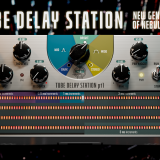
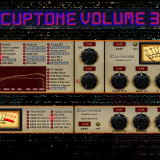
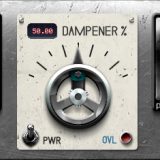
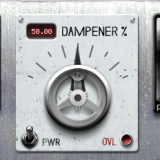
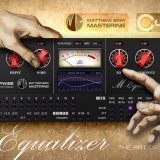
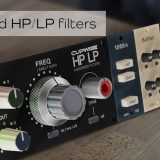
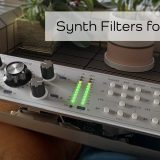
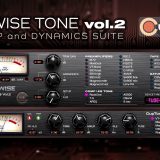
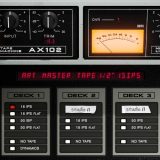



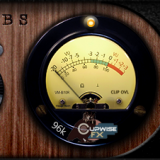
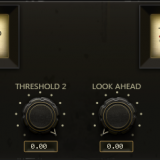
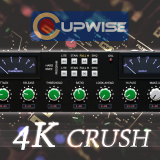
Comments
There are no comments yet, would you like to submit yours?